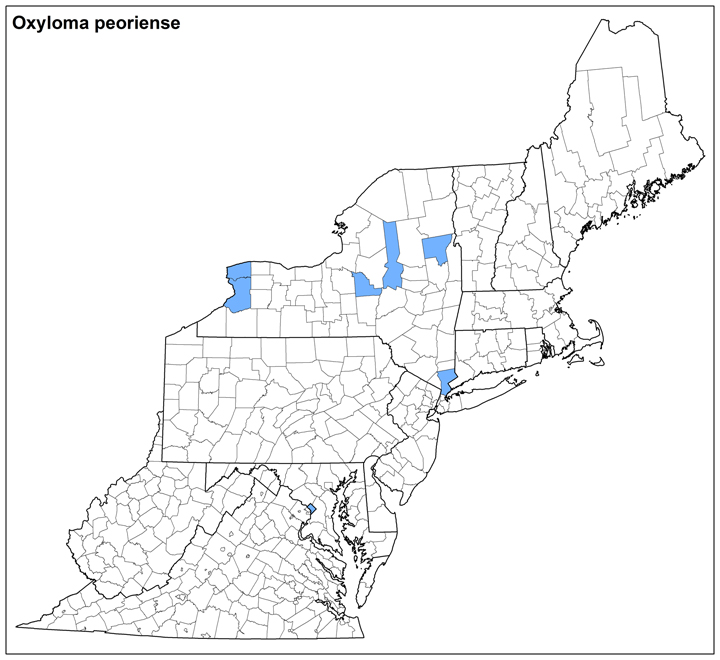Land Snails

Photos: Image not available at this time
Oxyloma peoriense (Wolf, 1894)
Family:Succineidae
Common name: Depressed Ambersnail
Identification
Width: 6-8 mm
Height: 10-13.5 mm
Whorls: 3
The shell is very thin, elongate-ovate, and “ashy,” with an inflated final whorl. The spire is wide, and it is longer than that of O. retusa. The aperture is ovate with a rounded lower lip, in contrast to the “retracted” and effuse” lip of O. retusa (Baker, 1939; Pilsbry, 1948).
Dissection may be necessary to identify succineid species. The genus Oxyloma has a penial sheath enclosing its entire penis and epiphallus, and there is an appendix on the end of the penis (Pilsbry, 1948; Grimm et al., 2009).
Note that Succineidae show a great deal of intraspecific variation in size and proportions, both within and between sites (Pilsbry, 1948).
Ecology
The snail may be found climbing on cattails in wet conditions. It rests on and lays eggs in cattail sheaths (Hubricht, 1985).
Little is known about the ecology of Oxyloma peoriense. Its congener, O. retusa,lays eggs in the summer, is dormant during the winter, and aestivates (forms a diaphragm over its shell opening) during dry conditions. The snail consumes plant material, fungi, algae, and pollen (Lannoo and Bovbjerg, 1985; Örstan, 2006).
Taxonomy
Synonyms are Oxyloma deprimida, Succinea peoriensis, S. retusa peoriensis, S. ovalis peoriensis, S. illinoisensis, and S. retusa illinoisensis.
Distribution
The species is found in southeastern Canada and in the northeastern US, ranging west to Illinois, south to DC and West Virginia, and north to Maine.
Conservation
NatureServe Global Rank: G4, G5, Secure.
Megan Paustian 10/2017
Range Map (Click to Enlarge)


